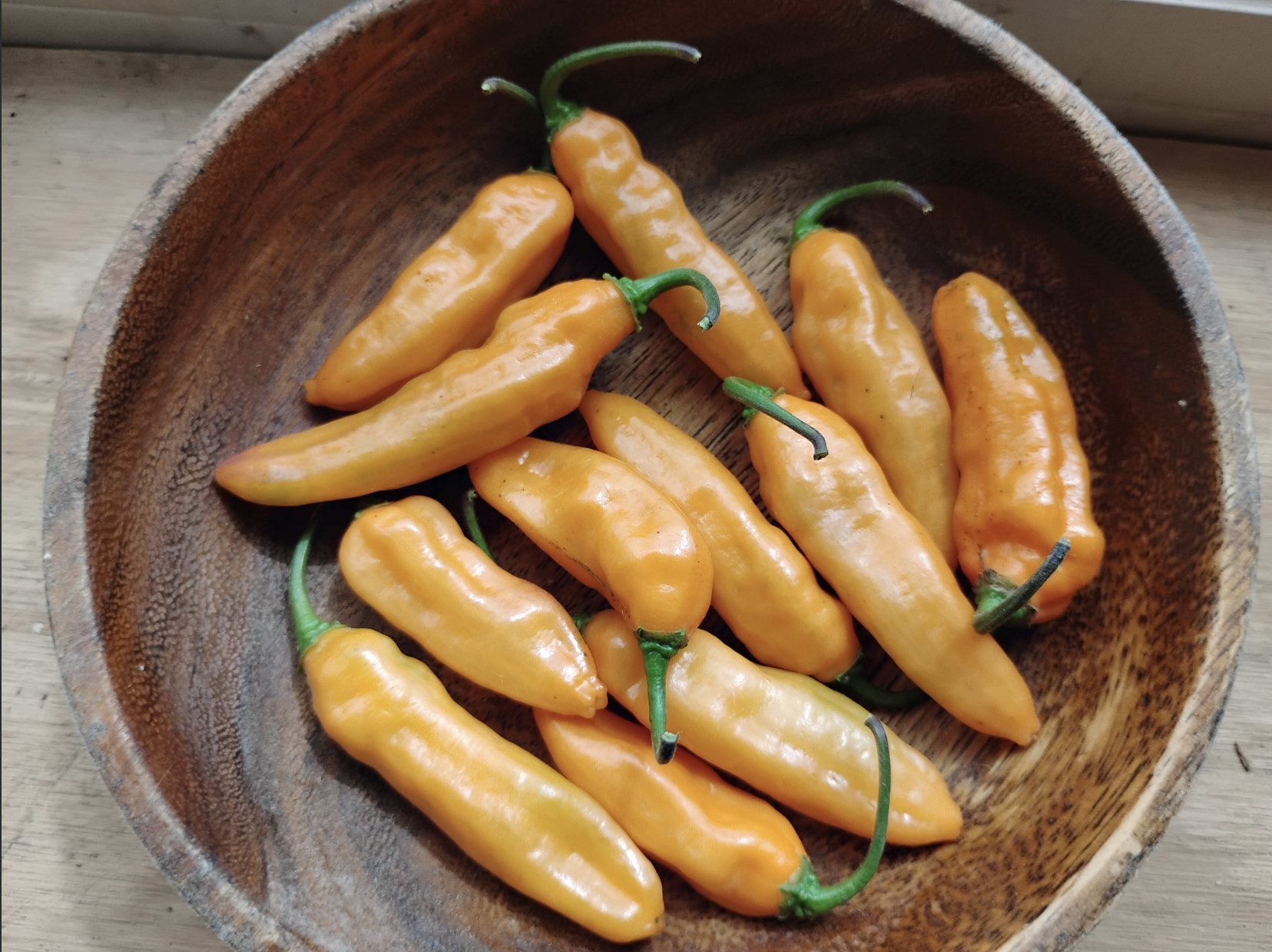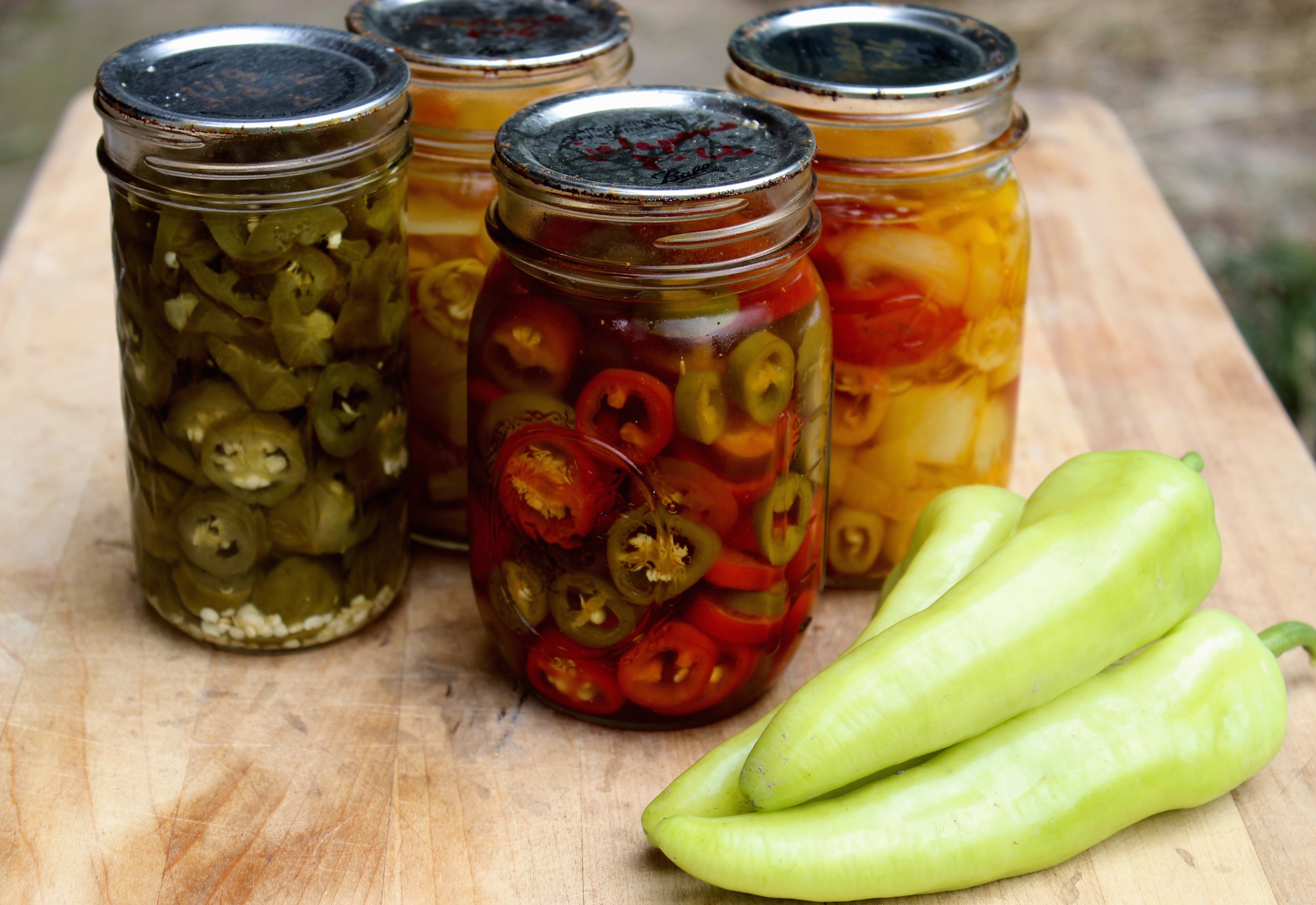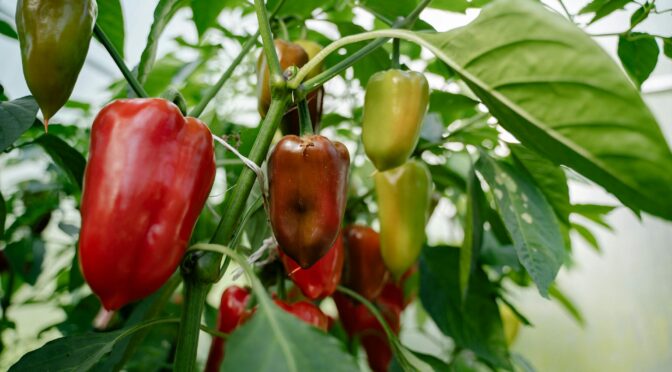In August, peppers dot the garden like holiday lights. We’re harvesting large sweet bell peppers like Charleston Belles, fiery little hot peppers like Serrano Tampiqueños, and fragrant spice peppers like Trinidad Perfumes. Whatever peppers you’ve grown this year, knowing how to harvest, store, and process your crop will help you make the most out of your peppers.
When to Harvest Peppers
You can harvest peppers at any color stage, but they aren’t fully ripe until they reach their mature color. Waiting until they are fully ripe increases flavor and nearly doubles the vitamin C content.
Exactly what color your peppers ripen to depends on the variety. For example. Chiclayo Hot Peppers ripen from light green to light orange while Purple Beauty Sweet Bell Peppers ripen from green to purple to deep red.
Especially for larger peppers, you may want to use shears or scissors to harvest the peppers. Tugging the fruits off by hand may damage your plant.

Extending the Harvest
Usually, mature pepper plants are still thriving when fall weather comes to Virginia. To extend our harvest, we cover the plants each night in old sheets or frost cloth during our first one to two weeks of light frosts.
Then, before the first killing frost, we uproot plants and place the roots in a bucket of water and store in a cool location to extend harvest by one month.
For fresh use late into the fall, we also like to grow Doe Hill Golden Sweet Bell Peppers. Their fruits keep well.
Storing Peppers
How you process and store your peppers will depend on the variety and what you have planned.
Fresh Eating
Store any peppers you want to eat fresh in the crisper drawer of your refrigerator. This is also a great place for peppers your waiting to process for canning or freezing. 
Canning
Peppers are a low acid vegetable, which means to safely can them, you must pressure can them or make incorporate them into an acidic recipe for water bath canning like salsa, hot sauce, or pickled peppers. Always used tested canning recipes from trusted sources.
Here are a few tested recipes:
- Pressure Canning Peppers (Hot or sweet, including chiles, jalapeno, and pimiento)
- Easy Hot Sauce
- Chile Salsa (Hot Tomato-Pepper Sauce
- Ball Zesty Salsa
- Pickled Jalapeño Rings
- Pickled Yellow Pepper Rings
- Pickled Hot Peppers
Freezing
Peppers are easy to freeze, you can freeze them raw or roast or blanch them first if you want to use them for cooking later in the season.
Here’s how to freeze peppers.
Drying
Drying or dehydrating peppers is a great way to store them. You can dry hot or spice peppers to be ground up for seasoning, or chunks of peppers to rehydrate and cook in soups, sauces, and casseroles.
Unfortunately, it’s usually too humid to air dry most peppers in the Southeastern United States. For most large peppers, it’s best to use a food dehydrator or dry them in the oven. You need an oven or dehydrator that you can set to 140°F. Higher temperatures will cook the peppers rather than dry them.
Learn to dry peppers in the oven here.
For some small peppers, you can use thread and needle to sting them for air drying. Typically, this works best if you can hang the strings somewhere hot and dry. An attic, loft, car port, or garden shed may work well.

